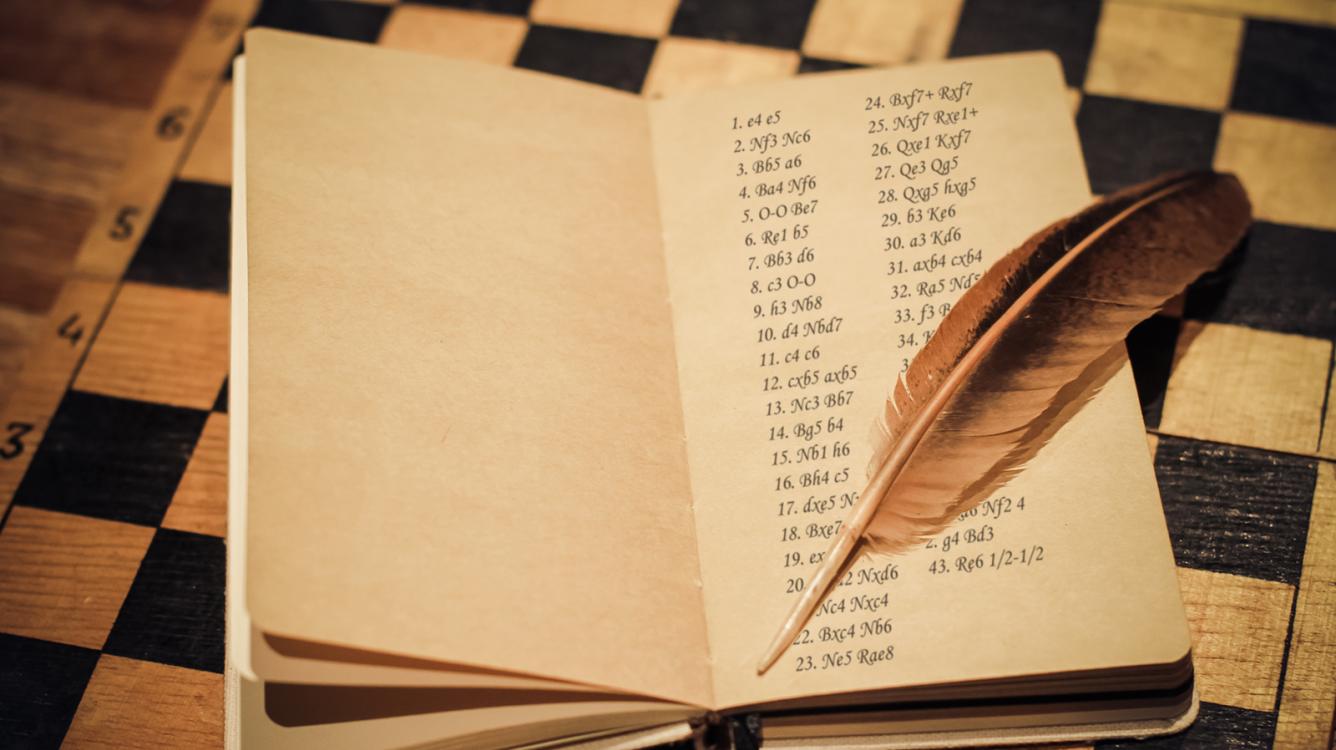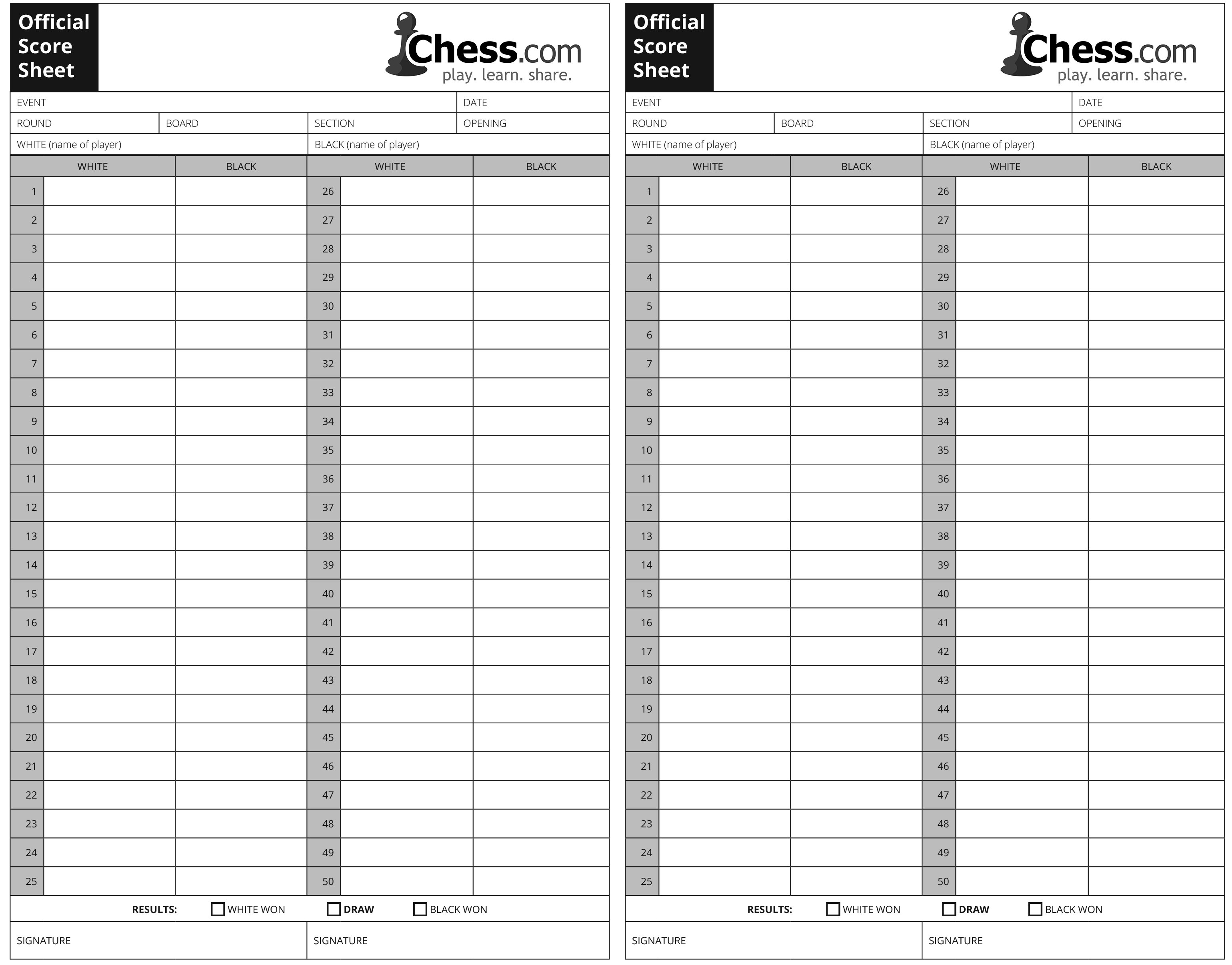
Chess Notation - The Language of the Game
Chess notation is a convenient way to keep track of games, so that you can replay them to study tactics, understand mistakes, or impress your friends. Try out chess notation in your next game - you'll find that nothing is more satisfying than that well-placed exclamation mark after the move that wins you the game.
- Algebraic Notation
- How to Write a Move
- Special Symbols
- Avoiding Ambiguity
- Other Notations
- Free Chess Notation Scorescheet
The simplest and most common form of chess notation is called Algebraic Notation. It labels the grid of the chess board with letters and numbers.
In this diagram, the white king is on square c3 and the black king is on square h5.
Rank (or row) 1 is the end of the board where white begins; black begins at rank 8. The files (or columns) are lettered from white's left to right.
Additionally, capital letters are used for pieces as follows:
K: King
Q: Queen
R: Rook
B: Bishop
N: Knight
P: Pawn (although, by convention, P is usually omitted from notation)

To write a move, give the name of the piece and the square to which it moves. If a piece is captured, we include the symbol x for "captures" before the destination square.
For example, in this game, white's first move is Nc3: knight to square c3. Black responds with f5 (remember, the P is omitted). White plays e4 and black captures the pawn, fxe4, f captures e4. The file f replaces the name of the pawn, since P is omitted. White recaptures, Nxe4. The rest of the game is written as
... Nf6
Nxf6+ gxf6
Qh5#
+ is the sign for check, and # is the sign for checkmate.
x: captures
0-0: kingside castle
0-0-0: queenside castle
+: check
#: checkmate
!: good move
?: poor move
more !s and ?s can be added for emphasis.
Rd1 is not enough to define this move--which rook?
In situations where regular notation is ambiguous, add an extra letter or number to specify the origin of the piece that moves. Here, Rad1, rook from file a to square d1, solves the problem. When a pawn makes a capture, always include the originating file, as in fxe4 and gxf6 above.

Most players today use Algebraic Notation, but there are a few variants:
Long Algebraic Notation gives the square of origin as well as the destination square for each move.
Descriptive Notation, an older system, names the files of the chess board for pieces. For example, the c file is called the QB, or queen's bishop's file. The ranks are written from each player's perspective. White's QB3 is black's QB6.
Download Free Chess Notation Scoresheet
You can download free ches scoresheets here, or purchase a scorebook like this one to take notation, but it is also possible to get started with regular lined paper.





